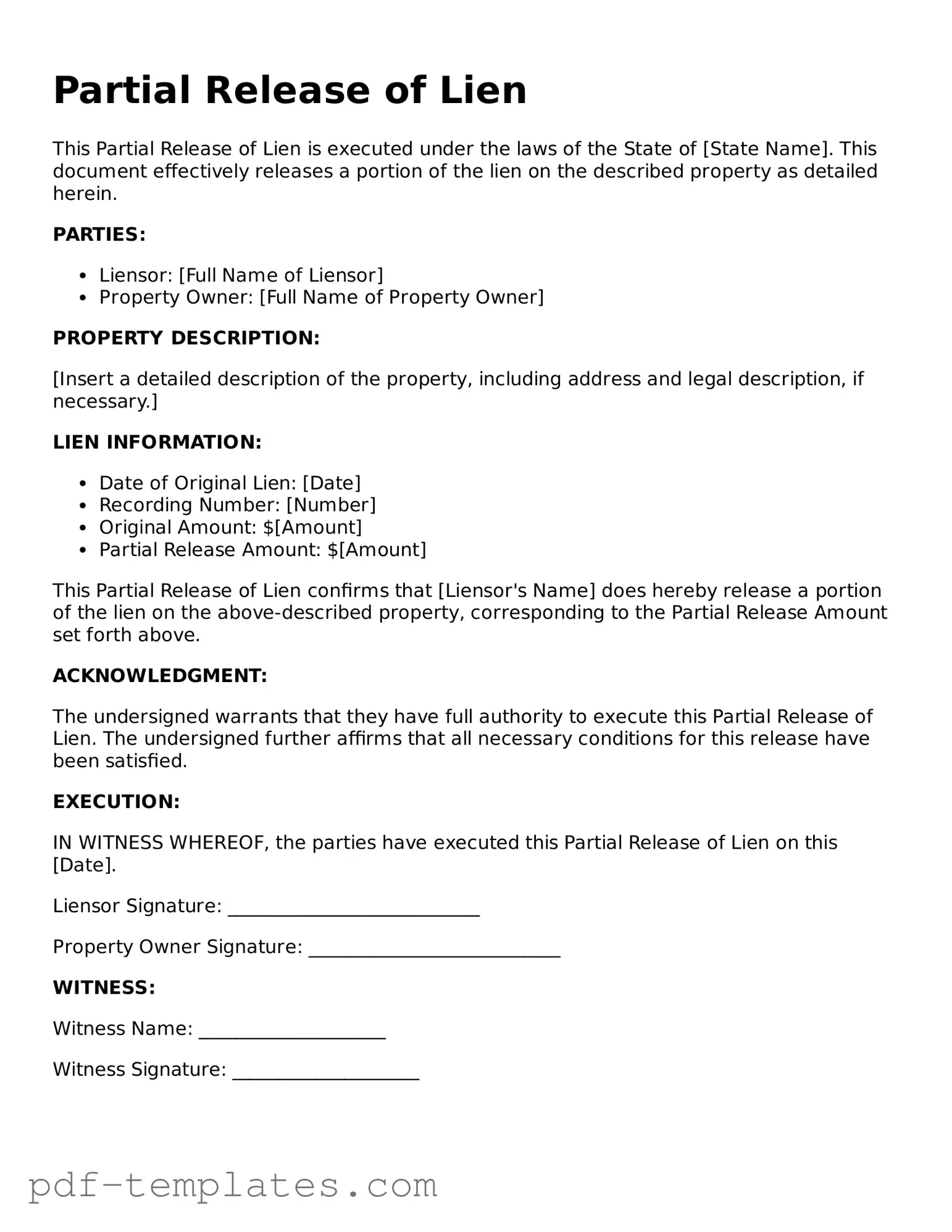The Partial Release of Lien form is similar to a Full Release of Lien, which serves to formally remove a lien from a property. In a Full Release, the lien claimant acknowledges that they have received full payment for the debt owed and relinquishes all rights to the property. This document provides the property owner with clear title, ensuring that no claims remain against the property. Both forms are crucial in real estate transactions, as they help clarify the status of any financial claims against the property, allowing for smoother sales and transfers.
In the context of managing various claims and financial responsibilities associated with property, it is essential to have reliable documentation, such as the Vehicle Accident Damage Release form. This form plays a crucial role in settling claims arising from auto accidents, serving as a legal acknowledgment of agreed compensation and freeing the payer from further liabilities. For further information and templates regarding such documents, visit TopTemplates.info.
Another document that resembles the Partial Release of Lien is the Lien Waiver. A Lien Waiver is often used in construction projects to confirm that a contractor or subcontractor has received payment for work completed. By signing this document, the contractor agrees not to place a lien on the property for the amount paid. While a Lien Waiver is typically issued upon payment, a Partial Release of Lien specifically addresses the release of a portion of the lien, making it clear that some obligations remain. Both documents aim to protect property owners and facilitate financial transactions in the construction industry.
The Notice of Intent to Lien also shares similarities with the Partial Release of Lien. This document serves as a warning to property owners that a lien may be placed if payment is not made. It informs the property owner of the outstanding debt and gives them an opportunity to settle the matter before a lien is officially recorded. While the Partial Release of Lien indicates that a portion of the lien has been released, the Notice of Intent to Lien is more about notifying the owner of potential legal action. Both documents are essential in managing financial obligations related to property ownership.
Lastly, the Satisfaction of Mortgage document is akin to the Partial Release of Lien. When a mortgage is paid off, the lender issues a Satisfaction of Mortgage, confirming that the debt has been fully satisfied and releasing the lien on the property. This document is vital for homeowners, as it signifies that they own their property free and clear. In contrast, a Partial Release of Lien indicates that only part of a lien has been removed, often in cases where multiple payments have been made. Both documents play a significant role in ensuring that property titles are clear and free of encumbrances.
